13 Best Laptops for Game Development in 2025

When you need the best laptop for game development, the real question is how it holds up in everyday workflows. Luckily, you’ve found the exact list you’ve been looking for.
Game developers are known to switch between engines, code editors, and 3D tools constantly, so the laptop has to feel smooth while moving across those tasks.
Workflows vary, and the hardware that feels “right” depends on the kind of game development you do and how often you move between locations. My goal is to help you find a laptop for game development that genuinely supports your process and keeps your tools responsive.
Jump to:
Our Top Picks in Best Laptops for Game Development
These first three options stand out because they handle everyday game development workflows smoothly, as you compile code, adjust scenes, and run quick playtests. Each one brings good processing power, a dedicated GPU, and enough reliability to feel comfortable during long work sessions.
- Alienware x17 (2025 Model) – This one feels like a workstation disguised as a gaming laptop. The big display gives plenty of screen space for editors, and it holds performance steady during heavy development tasks without sudden drops.
- ASUS TUF A16 (2025 Model) – A strong pick if you want a laptop for game development on a tighter budget. Solid GPU options, good thermals, and RAM/SSD upgrade paths make it easy to keep local builds fast.
- Razer Blade 16 (2025 Model) – Sleek, portable, and powerful. Great for game developers who value a sharp display and stable performance when switching between engines, code, and 3D tools.
Keep scrolling to explore the full list and find the setup that fits your workflow, your budget, and the way you actually like to build games. There’s a laptop here for every style of developer.
13 Best Laptops for Game Development to Power Your Coding & Creative Workflows
This section covers the full list of picks for the best laptop for game development, organized by different needs and work styles. Some developers need something stable for coding and game programming, while others want a powerful laptop for 3D modeling and game design, or a portable setup to develop games on the go.
These laptops balance performance, price, and portability, and many include a discrete graphics card to keep real-time previews smooth in Unity and Unreal. Each model is highlighted for a specific use case, with key specs and a quick verdict to help you choose what best fits your workflow.
1. Alienware x17 [Best Overall Laptop for Game Development]
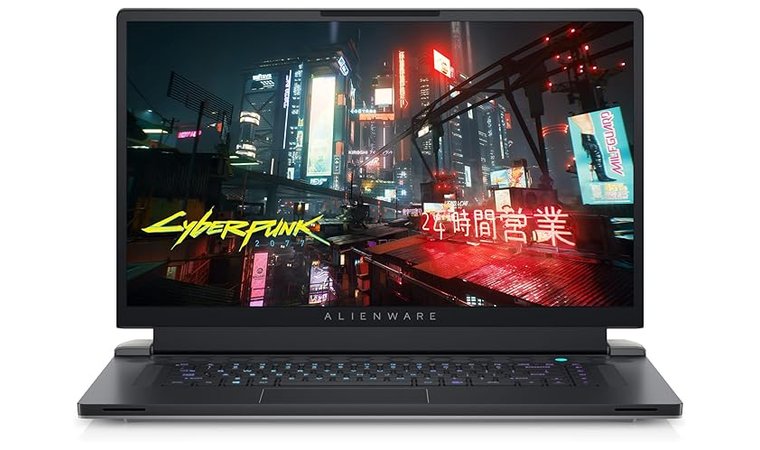
| Specs | Details |
| CPU | Intel Core i9-13900H / i9-14900H (H-Series) |
| GPU | NVIDIA GeForce RTX 4080 / RTX 4090 |
| RAM | Up to 64GB DDR5 |
| Storage | Up to 4TB NVMe SSD |
| Display | 17.3″ FHD / QHD+ |
| Refresh Rate | 165Hz / 240Hz |
| Battery | 4–6 hours |
| Weight | 3.0 kg |
| Connectivity | USB-C, Thunderbolt, HDMI, Ethernet |
If you want a powerful laptop that can handle demanding tasks without slowing down, the Alienware x17 is the closest thing to a portable desktop. The 17.3″ screen gives you enough room to keep Unity, Unreal, and your code editor visible at the same time, which really helps game developers avoid constant window switching.
It’s built with advanced cooling, so longer build times, video rendering, baking lighting, and profiling sessions stay stable. And with high RAM options and fast NVMe storage, you can keep massive projects local instead of juggling external drives.
The Alienware x17 stands out because it stays fast under heavy workloads. When you switch between game development tools, it keeps that same performance level instead of dipping or throttling. That consistency makes all the difference in real production work.
I also like the overall build quality, especially the keyboard and port layout. It’s easy to connect multiple applications, peripherals, external monitors, or even mobile test devices. It just feels well-suited to real daily game development needs.
| Pros | Cons |
|---|---|
| ✅ Huge screen space for level editing and multi-window layouts ✅ NVIDIA GeForce RTX GPUs handle high-fidelity previews and video editing ✅ Advanced cooling keeps performance stable during long compiles ✅ Ample RAM and storage options support complex tasks and big builds ✅ Ideal for devs who want enough power to profile at high settings | ❌ It’s heavier than many laptops, but that’s the trade-off for desktop-grade hardware |
Final Verdict: The Alienware x17 is the right laptop if you need a reliable gaming laptop that delivers better performance for large-scale game development projects and stays fast during real production workflows.
2. ASUS TUF A16 [Best Budget Laptop for Game Development]

| Specs | Details |
| CPU | AMD Ryzen 7 7735HS / Ryzen 9 7940HS |
| GPU | NVIDIA GeForce RTX 4060 / RTX 4070 |
| RAM | 16GB–32GB DDR5, upgradeable |
| Storage | 512GB–2TB NVMe SSD, upgradeable |
| Display | 16″ FHD or QHD |
| Refresh Rate | 144Hz–165Hz |
| Battery | 6–9 hours |
| Weight | 2.2 kg |
| Connectivity | USB-C, HDMI, Ethernet, Wi-Fi 6 |
The ASUS TUF A16 is one of those gaming laptop setups that hit the sweet spot for game developers who want solid performance without spending workstation-level money. The AMD Ryzen processors here are efficient and fast enough for coding, baking lighting, and running Unreal Engine previews.
And since both RAM and NVMe storage are upgradeable in many configurations, you can expand later instead of replacing the whole machine, which helps when projects grow and you need more RAM or faster local caching for builds.
It’s the best budget pick because it balances price and real development practicality. You get a good processor, a capable NVIDIA GeForce RTX GPU, upgrade paths, and a chassis that stays stable through real game development cycles: compile, test, adjust, repeat. It focuses on consistency, not looks.
The 16″ display with a 144Hz+ refresh rate is surprisingly useful, not just to play games, but to test frame timing, animation pacing, and UI responsiveness in real time.
Cooling is also handled well because it avoids the sudden temperature spikes you get with thinner laptops, so performance stays more consistent during longer, demanding tasks. And if your workflow leans more into code and iteration loops, this model also fits well among the best laptops for programming in general.
| Pros | Cons |
|---|---|
| ✅ Upgradeable RAM and NVMe storage for long-term use ✅ Strong value performance from AMD Ryzen CPUs ✅ NVIDIA GeForce RTX GPUs handle editor previews smoothly ✅ 144Hz+ panel helps when checking motion, pacing, and timing ✅ Ethernet port is great for multiplayer or latency testing | ❌ Materials feel more practical than premium, but durability is solid |
Final Verdict: The ASUS TUF A16 is ideal if you want a reliable, budget-friendly laptop that can support real game development workflows and grow with your projects over time.
3. Razer Blade 16 [Best Budget Laptop for Game Development]
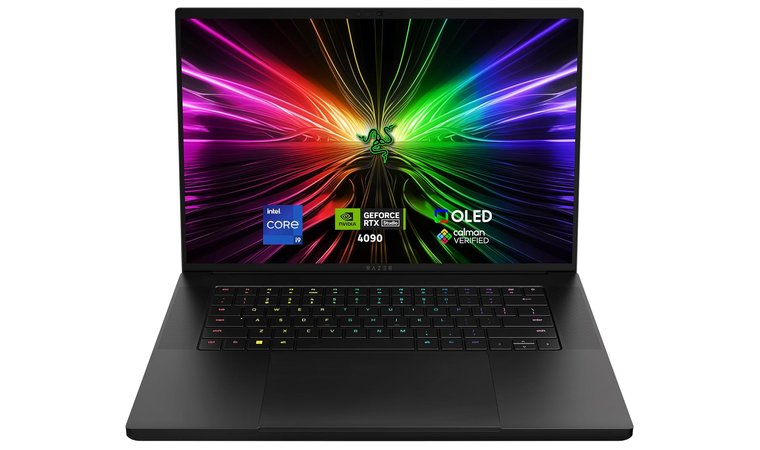
| Specs | Details |
| CPU | Intel Core i9-14900HX (or similar high-end variants) |
| GPU | NVIDIA GeForce RTX 4080 / 4090 |
| RAM | Up to 64GB DDR5 |
| Storage | Dual M.2 PCIe Gen4 SSD slots |
| Display | 16″ OLED / Mini-LED options, high resolution |
| Refresh Rate | Up to 240Hz |
| Battery | Up to 5–7 hours |
| Weight | 2.45kg |
| Connectivity | USB-C / USB4, HDMI, Thunderbolt, audio jack |
The Razer Blade 16 is a strong fit for anyone who needs to evaluate lighting tweaks, shaders, and scene detail directly inside the engine viewport with accuracy. The OLED display is sharp, color-accurate, and gives you enough screen resolution to manage multi-window layouts without feeling cramped. It also has the discrete graphics card power to run demanding scenes in Unity and Unreal smoothly while testing gameplay.
Offers a large screen paired with extreme GPU power, which lets you run high-fidelity previews and lighting setups without waiting on heavy rendering passes. The display quality makes a noticeable difference when reviewing textures, color grades, and final look-dev work.
You can stack more RAM and take advantage of those dual SSD slots to keep large asset libraries and build folders accessible locally. The chassis itself stays cool thanks to a well-engineered vapor chamber system that spreads heat efficiently.
This results in more consistent performance during game development workflows, making it one of the best laptops for programming and game development, where projects can stay open for hours.
| Pros | Cons |
|---|---|
| ✅ Gorgeous display that makes visual debugging and color work clearer ✅ Enough GPU power for real-time rendering and advanced engine testing ✅ Solid build quality that feels professional for studio or travel use ✅ Room for two fast SSDs to keep active builds local ✅ Strong port selection for external monitors, VR setups, and capture devices | ❌ Price is high, but it reflects high-end performance and premium materials |
Final Verdict: The Razer Blade 16 is ideal for developers who prioritize screen quality and raw performance in a gaming laptop that doubles as a portable studio workstation.
4. Lenovo Legion 7i [Best All-Round Gaming Laptop for Game Developers]
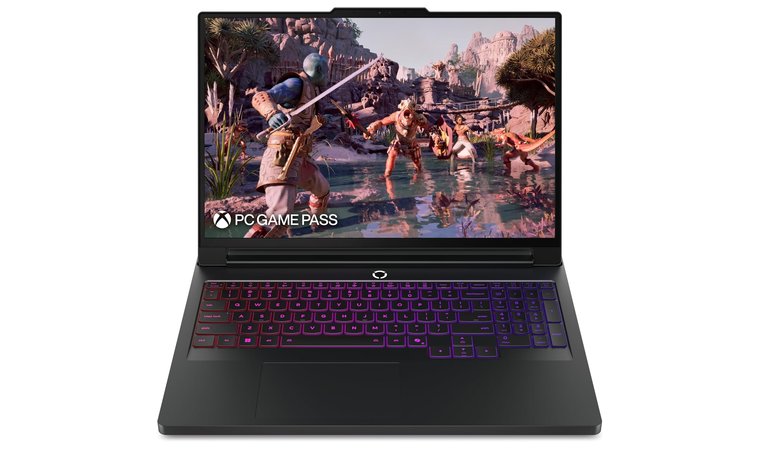
| Specs | Details |
| CPU | Intel Core i9 (H-series) |
| GPU | NVIDIA GeForce RTX 4070 / 4080 |
| RAM | Up to 32GB DDR5 (upgradeable) |
| Storage | 1TB NVMe SSD (upgradeable) |
| Display | 16″ WQXGA (2560×1600) |
| Refresh Rate | Up to 240Hz |
| Battery | Up to 6–8 hours |
| Weight | 2.3kg |
| Connectivity | USB-C, USB-A, HDMI, Ethernet, audio jack |
The Lenovo Legion 7i is one of those gaming laptop setups that feels well-balanced for actual game development, not just playing. The high single-thread performance on the CPU makes things like compiling code, baking lighting, and navigating large Unity or Unreal projects feel responsive instead of sluggish. Pair that with an RTX-class graphics card, and you get smooth real-time previews, even in more complex testing scenes.
It hits that middle ground where you get strong performance, upgrade options, and good cooling without jumping into ultra-premium pricing. It’s a laptop that can stay with you as your projects grow.
Legion’s Coldfront cooling helps maintain consistent performance during long builds or shader tweaking sessions. The display is also great for day-to-day work: sharp, clean text for coding, and a high refresh rate when you play games to test your builds. Plus, upgradeable RAM and storage means this machine doesn’t lock you into how much RAM you start with.
| Pros | Cons |
|---|---|
| ✅ Great all-around performance for coding + engine work ✅ Upgradeable RAM and SSD give it a longer usable lifespan ✅ Sharp 16″ screen gives comfortable workspace visibility ✅ Cooling system keeps performance stable during heavy workloads ✅ Full port layout makes external setups simple | ❌ Not the lightest option, but the build quality makes it feel solid rather than bulky |
Final Verdict: The Lenovo Legion 7i is one of the best Lenovo laptops. It’s a reliable, well-rounded choice for developers who want consistent performance and room to grow without overspending.
5. GIGABYTE AERO X16 [Color-Accurate OLED Display and Powerful GPU for Game Development and Design]

| Specs | Details |
| CPU | AMD Ryzen 7 / Intel Core H-series options |
| GPU | NVIDIA GeForce RTX 4060 / 4070 |
| RAM | Up to 32GB DDR5 (upgradeable) |
| Storage | 1TB NVMe SSD (upgradeable) |
| Display | 16″ OLED, high color accuracy |
| Refresh Rate | 120–165Hz (model dependent) |
| Battery | Up to 6–8 hours |
| Weight | 1.9kg |
| Connectivity | USB-C, USB-A, HDMI, 3.5mm audio jack |
The GIGABYTE AERO X16 is the perfect laptop for game development workflows involving art, texturing, shading, UI layouts, or environment previews.
The OLED display makes a noticeable difference when reviewing colors and lighting because it gives you a clearer sense of how assets will look in-engine before export. It also keeps enough graphics card power to preview scenes smoothly without relying on integrated graphics, which is key when working in Unity or Unreal.
It’s one of the few laptops in its price range that combines color-accurate visuals, a discrete GPU, and upgradeable RAM and SSD, making it a strong value option for students, indie devs, and designers growing their skillset and project size.
The chassis is light and easy to carry, so going between home, school, studio, or coworking doesn’t feel like lugging a brick. And if you start taking on bigger scenes later, you can install more RAM and a second SSD instead of replacing the whole machine.
This laptop delivers a rare blend of GPU muscle, display quality, and audio reliability, which makes it an excellent laptop for music production and game development.
| Pros | Cons |
|---|---|
| ✅ OLED display helps with accurate texture and lighting checks ✅ Discrete GPU handles real-time previews better than integrated graphics ✅ Upgradeable RAM and storage for future project growth ✅ Lightweight and easy to carry for portable workflows ✅ Good port layout for external monitors or capture devices | ❌ GPU options aren’t the most extreme, but they’re well-balanced for development and testing |
Final Verdict: The GIGABYTE AERO X16 is a great laptop for devs and artists who want stunning visuals and reliable performance without jumping into high-end pricing tiers.
6. Lenovo Legion Pro 7i [Top-Tier CPU and GPU Combo for Heavy Game Engines]

| Specs | Details |
| CPU | Intel Core i9 (H-series) |
| GPU | NVIDIA GeForce RTX 4080 / 4090 |
| RAM | Up to 32GB DDR5 (upgradeable) |
| Storage | Up to 2TB NVMe SSD (upgradeable) |
| Display | 16″ WQXGA (2560×1600) |
| Refresh Rate | 240Hz |
| Battery | Around 5–7 hours of battery life |
| Weight | 2.5kg |
| Connectivity | USB-C, USB-A, HDMI, Ethernet, 3.5mm audio jack |
If you do a lot of heavy Unreal Engine or Unity editor work, the Lenovo Legion Pro 7i feels like a powerful machine built for that kind of workflow. It has top-tier CPUs and a discrete graphics card that hold up during large builds, scene baking, shader compilation, and lighting passes.
The 16-inch high refresh display gives you real clarity when checking animation timing and gameplay feel, and cooling is strong too, so performance stays steady even with demanding workloads, which is exactly why it stands among some of the best laptops for engineering students.
This model is a great laptop for teams or solo devs working inside full engines with lots of real-time preview work. It offers more RAM, high-end GPU options, and powerful processors that shorten compile time and keep editor navigation smooth.
Beyond real-time engine work, the Lenovo Legion Pro 7i is also one of the best laptops for rendering, whether you’re producing high-resolution 3D scenes, exporting video, or baking complex lighting setups. Its thermal design keeps the system stable during long renders, making it a reliable choice for developers, engineers, and artists who need both game development and professional rendering capabilities in one machine.
| Pros | Cons |
|---|---|
| ✅ Handles demanding applications and large game projects smoothly ✅ Powerful GPU options for accurate real-time testing ✅ 16″ WQXGA 240Hz display helps with timing and visual checks ✅ Legion Coldfront cooling keeps performance consistent in long sessions ✅ Upgradeable RAM and storage for long-term use | ❌ Battery life is average, but plugged-in performance is the priority for most dev setups |
Final Verdict: The Lenovo Legion Pro 7i is one of the most powerful laptop options for developers who need fast compiles, smooth editor navigation, and reliable performance during large-scale game builds.
7. Alienware x16 R2 [Premium Build and Next-Gen GPU Performance for Game Developers]
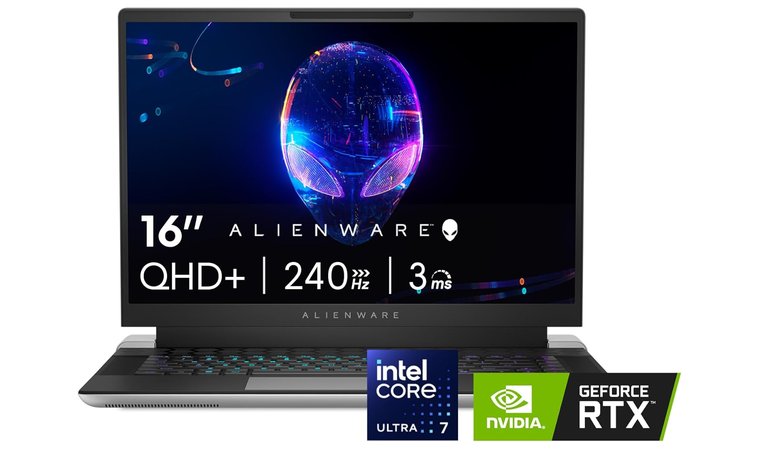
| Specs | Details |
| CPU | Intel Core i9-14900HX (configurable options vary) |
| GPU | NVIDIA GeForce RTX 4090 (or RTX 4080 configs) |
| RAM | Up to 32GB DDR5 |
| Storage | Up to 2TB NVMe SSD |
| Display | 16″ QHD+ (2560×1600) |
| Refresh Rate | 240Hz |
| Battery | 6–8 hours (real-world mixed use) |
| Weight | 2.7 kg |
| Connectivity | USB-C, USB-A, HDMI, Thunderbolt, audio jack |
If you like a gaming laptop that feels solid, cool, and stable under pressure, the Alienware x16 R2 is one of those builds that immediately inspires confidence. The performance ceiling is high thanks to the RTX 40-series GPUs and strong i9 processor options, which helps when working inside heavy game engines, baking lighting, compiling shaders, or profiling performance across scenes.
This model stands out because it maintains speed under load. The cooling design doesn’t throttle aggressively, so you keep performance steady during long build cycles. It also has enough RAM and SSD flexibility to hold growing project folders locally, which smooths effective game development workflows day to day.
The QHD+ 240Hz display also makes visual QA and scene adjustments feel natural, and small changes in tone, shadows, or motion are easier to catch.
| Pros | Cons |
|---|---|
| ✅ Great GPU and CPU combo for heavy engine work ✅ High refresh QHD+ panel helps with detailed scene adjustments ✅ Robust build quality feels reliable long-term ✅ Good port selection for multi-monitor and VR setups ✅ Smooth performance for seamless multitasking | ❌ Battery life is just okay, but most dev work is plugged in anyway |
Final Verdict: This one makes sense for developers who treat their laptop like their main workstation. It stays cool, stays quick, and stays reliable when a project grows in size.
8. Razer Blade 14 [Best Portable High-Performance Laptop for Game Development]
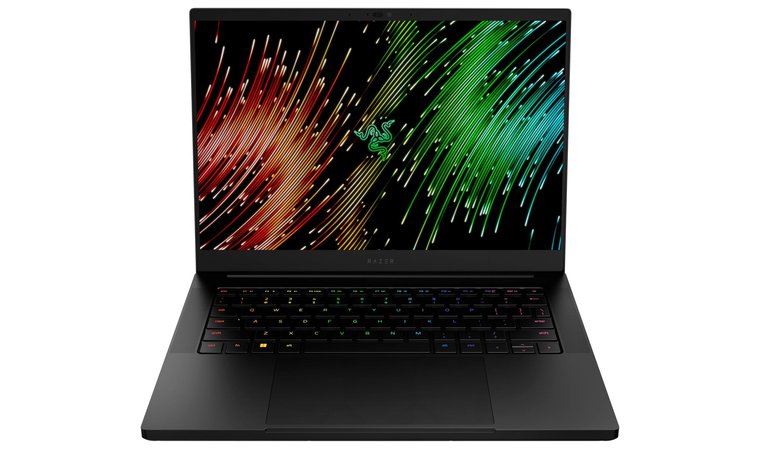
| Specs | Details |
| CPU | AMD Ryzen 9 (latest H-series / Zen 4 options) |
| GPU | NVIDIA GeForce RTX 4070 / 4060 |
| RAM | Up to 32GB LPDDR5X |
| Storage | Up to 1TB–2TB NVMe SSD (varies by model) |
| Display | 14″ OLED (2880×1800) |
| Refresh Rate | 120–165Hz (depending on config) |
| Battery | 6–8 hours mixed real use |
| Weight | 1.8 kg |
| Connectivity | USB-C, USB-A, HDMI, audio jack |
If you want a gaming laptop that fits in your backpack and still handles full Unity or Unreal projects, the Razer Blade 14 delivers that performance in a compact build.
The Ryzen CPUs inside have great single-core speed, so compile times and editor responsiveness stay quick even during heavier game development workloads. The discrete graphics card options also let you test lighting, particle setups, and character animation loops smoothly (even on the go).
It’s genuinely portable without dropping into ultralight/weak territory. The OLED display is a big plus if you care about visual accuracy: UI elements, textures, and color grading all show clearly. And it also handles heat better than previous Blade generations, which helps during longer work sessions.
For devs who bounce between home setups, coffee shops, offices, or meetups, this machine fits a flexible workflow without needing a full workstation, making it one of the top laptops for travel.
| Pros | Cons |
|---|---|
| ✅ Portable while still offering strong performance ✅ Great for compile times and in-engine work ✅ OLED panel makes visual checks clearer ✅ Solid RAM and SSD speeds help load assets faster ✅ Well-built chassis that holds up to daily use | ❌ Runs warm under heavy sustained loads, though cooling is improved over older models |
Final Verdict: A strong fit for developers who want serious power in a compact size, especially if you move around a lot or like working from different environments.
9. HP OMEN 16 [Best Value Laptop for Game Development]
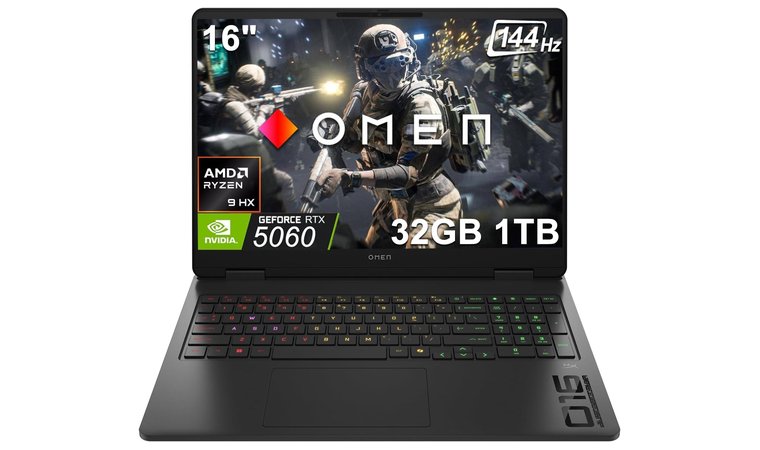
| Specs | Details |
| CPU | Intel Core i7 / i9 (H-class) |
| GPU | NVIDIA GeForce RTX 4060 / 4070 |
| RAM | Up to 32GB DDR5 |
| Storage | Up to 2TB NVMe SSD |
| Display | 16″ WQXGA (2560×1600) |
| Refresh Rate | 144–240Hz |
| Battery | 6–8 hours battery life (mixed use) |
| Weight | 2.4 kg |
| Connectivity | USB-C, USB-A, HDMI, Ethernet, audio jack |
The HP OMEN 16 it’s the perfect mix for performance, portability, and price. The H-class CPUs offer fast compile times, and the RTX GPU options handle in-engine game testing without stuttering.
It’s also a laptop that feels comfortable to use daily, and it doesn’t try too hard to be flashy, but it definitely performs when you need it to.
The OMEN Tempest cooling system is the key here. It helps the laptop sustain performance during long baking or build sessions, and you can also configure more RAM and SSD space to keep your assets local, which speeds up your workflow and reduces time spent waiting.
There’s no messy operating system or weird overlays here, it keeps things straightforward so you can focus on your project, not fighting menus.
| Pros | Cons |
|---|---|
| ✅ Strong CPU and GPU performance for development workflows ✅ Good cooling keeps speeds consistent ✅ Sharp 16″ display for accurate visual checks ✅ Expandable RAM and storage options ✅ Reasonable balance of price and performance | ❌ Bulkier than ultra-thin laptops, but far cooler and more stable under load |
Final Verdict: A dependable choice for developers who want solid everyday performance at a sensible price. It handles compiles, testing, and engine work smoothly without the premium markup of higher-end models. And if you also produce audio or work on tracks, our roundup of the best laptops for music production will help you compare.
10. MSI Pulse GL66 [Best Affordable RTX Laptop for Game Development]

| Specs | Details |
| CPU | Intel Core i7-12700H (or similar H-series) |
| GPU | Intel Core i7-12700H (or similar H-series) |
| RAM | 16GB–32GB DDR4 |
| Storage | 512GB–1TB NVMe SSD |
| Display | 15.6″ FHD / QHD |
| Refresh Rate | 144Hz–240Hz (depending on configuration) |
| Battery | 5–7 hours (varies by workload) |
| Weight | 2.25 kg |
| Connectivity | USB-C, USB-A, HDMI, Ethernet, audio jack |
If you want a gaming laptop that can handle real engine work but stays reasonably portable, the MSI Pulse GL66 sits in a nice middle lane. It has enough GPU power to run Unity and Unreal scenes smoothly, and the high-refresh panel makes it useful for checking frame pacing and real-game feel while you’re iterating.
The chassis is light enough to move between workspace, home, or campus without being annoying to carry.
The Pulse GL66 does a good job balancing price, performance, and mobility. You still get a discrete graphics card and solid CPU performance, but without paying high-end model prices. Compile times stay manageable, gameplay previews are smooth, and there’s room to add more RAM or SSD space later, which helps extend lifespan as your project sizes grow.
It also stays relatively stable under sustained workloads, which matters when you’re building or baking assets.
| Pros | Cons |
|---|---|
| ✅ Good RTX GPU options for real game engine testing ✅ High-refresh displays help with FPS profiling ✅ Upgradeable RAM and NVMe storage ✅ Decent thermals for a thinner chassis ✅ Portable enough for hybrid work setups | ❌ Battery life isn’t its standout feature, but plugged in, it delivers the performance you expect |
Final Verdict: A practical option for students and indie devs who want RTX performance without stretching the budget. It’s capable where it needs to be and upgradeable enough to stay relevant as your projects get heavier.
11. Acer Predator Helios 300 [Best Performance and Thermal Efficiency at a Competitive Price Point for Game Development]

| Specs | Details |
| CPU | Intel Core i7-12700H / i7-13700H (H-series) |
| GPU | NVIDIA GeForce RTX 3060 / 3070 |
| RAM | 16GB–32GB DDR4 (upgradeable) |
| Storage | 512GB–1TB NVMe SSD (upgradeable, 2 slots on many SKUs) |
| Display | 15.6″ FHD / QHD |
| Refresh Rate | 144Hz–240Hz |
| Battery | Around 5–6 hours |
| Weight | 2.4 kg |
| Connectivity | USB-C, USB-A, HDMI, Ethernet, audio jack |
If you’re working on game development and want strong performance without going into high-end price territory, the Acer Predator Helios 300 is a solid option.
The H-series CPUs give good compile speeds, and the RTX GPU delivers reliable performance in engines like Unity and Unreal when previewing scenes or running playtests. It’s also easy to upgrade, so you can drop in more RAM or a second NVMe drive when your projects start getting heavy.
The Helios 300 stands out because it balances performance and thermals well for the price. The AeroBlade cooling and liquid metal on some models help maintain stability during long work sessions (lightmap bakes, shader compilation, large asset imports) without the machine instantly throttling.
It also has enough ports to plug in external monitors, capture devices, or VR hardware without dongle chaos.
| Pros | Cons |
|---|---|
| ✅ Strong CPU/GPU combo for serious engine work ✅ Good thermals help sustain performance under load ✅ Upgradeable RAM and storage for project growth ✅ High-refresh display helps with FPS profiling ✅ Good port layout for dev accessories and external monitors | ❌ Battery life is average and performs best while plugged in |
Final Verdict: A great fit if you want dependable performance and stable thermals while keeping the budget reasonable. It’s powerful where it counts and easy to expand as your game projects scale.
12. ASUS ROG Zephyrus G14 [Best Lightweight Performance Machine for Game Developers]

| Specs | Details |
| CPU | AMD Ryzen 9 (H-series) |
| GPU | NVIDIA GeForce RTX 4070 / 4060 |
| RAM | Up to 32GB DDR5 |
| Storage | Up to 2TB NVMe SSD |
| Display | 14″ OLED (2880×1800) |
| Refresh Rate | 120–165Hz (varies by model) |
| Battery | 7–9 hours mixed use |
| Weight | 1.6 kg |
| Connectivity | USB-C, USB-A, HDMI, USB4, Audio |
If you want a gaming laptop that’s actually portable without sacrificing power, the ASUS ROG Zephyrus G14 is one of the few that gets it right. The Ryzen H-series CPUs give strong single-core speed, which helps with fast compile times and smoother game development iteration loops. The discrete graphics card options also make in-engine previews, test runs, and quick scene adjustments responsive instead of laggy.
It’s the laptop you can take anywhere without feeling like you left performance behind. The OLED screen options also help a lot when adjusting lighting, textures, and color balance, so everything looks more accurate and easier to evaluate while working.
It also stays reasonably cool for its size, which keeps performance stable during longer coding, asset work, or testing games across builds.
| Pros | Cons |
|---|---|
| ✅ Lightweight and easy to carry daily ✅ Strong CPU performance for quick compile times ✅ OLED display provides sharper color evaluation ✅ Good GPU options for real-time engine previews ✅ Solid battery life for a performance laptop | ❌ Smaller screen might feel tight for multi-window workflows |
Final Verdict: The ASUS ROG Zephyrus G14 is one of the best ASUS laptops for devs who need power in a portable form.
13. MSI GE76 Raider [Best Affordable RTX Laptop for Game Development]

| Specs | Details |
| CPU | Intel Core i7-12700H / i9 variants (multiple cores) |
| GPU | NVIDIA GeForce RTX 3070 / 3080 |
| RAM | Up to 64GB DDR4 |
| Storage | Dual NVMe SSD bays |
| Display | 17.3″ (FHD or QHD) |
| Refresh Rate | 144Hz–240Hz |
| Battery | 5–7 (real workflow use) |
| Weight | 2.9 kg |
| Connectivity | USB-C, USB-A, HDMI, Mini DP, Ethernet, audio |
If you prefer a gaming laptop that works more like a portable workstation than a sleek ultrabook, the MSI GE76 Raider fits that lane.
The large chassis allows for more cores, higher wattage GPUs, and better sustained performance during intense workloads like building lighting or rendering cutscenes.
It offers room to grow. You can add more RAM, more SSD space, and keep all the specs local, meaning faster compile times and fewer slowdowns from external drives. And the cooling system helps keep performance steady, instead of throttling under heavy tasks the way thinner high end laptops like the Yoga Pro or MacBook Pro can when running game engines for hours.
The 17.3″ display also gives you room to keep your editor, game viewport, and debug tools open without constantly rearranging windows.
| Pros | Cons |
|---|---|
| ✅ Plenty of room for RAM and SSD upgrades ✅ Strong GPU performance for real-time engine previews ✅ Large screen makes multi-window workflows easier ✅ Cooling holds performance steady during long sessions ✅ Good port selection for monitors and capture setups | ❌ Bulkier and heavier to carry daily, though it’s meant more as a mobile workstation |
Final Verdict: The MSI GE76 Raider is one of the best MSI laptops if you want a device that behaves like a desktop replacement and keeps pace with complex game projects over time.
What Makes a Laptop Good for Game Development?
Working on game development means bouncing between code editors, engine viewports, texture tools, audio utilities, and playtesting builds. It’s a workflow that pushes both the CPU and GPU constantly.
So the laptop you choose needs to handle several demanding tasks at once without slowing down or making everything feel heavy or laggy. A good setup lets you compile, preview, and iterate smoothly so you actually stay in the creative flow.
1. Processor
The CPU is what handles compiling code, running logic, and responding to your tools. For most developers, something like an Intel Core i7, Ryzen 7, Intel Core Ultra, or higher is ideal.
These chips have the clock speeds needed to keep editor responsiveness snappy. If you’ve ever clicked Play in Unity and waited too long, you know exactly why CPU speed matters. If you’re mainly iterating gameplay systems, AI, or simulation, the CPU is where you’ll feel the difference most.
2. Graphics Card
A dedicated GPU is essential for previewing scenes in Unity or Unreal, baking lighting, running shaders, and seeing your work in real time.
NVIDIA RTX and AMD Radeon GPUs handle live rendering far better than integrated graphics. If your game involves 3D environments, VFX, or just needs to look polished while testing, the GPU will determine how smooth that feels.
3. RAM
Think of RAM as your workspace. 16 GB is the minimum for a smooth workflow, but 32 GB is where things start to feel comfortable, especially if you like having Blender, your IDE, Discord, and the engine open at the same time.
Large assets, higher resolution textures, and multiple tools can eat memory fast.
4. Storage
Go for NVMe SSD storage. It loads projects, imports textures, and builds testing executables much faster than older drives. 1 TB is the sweet spot since game projects grow quicker than expected.
5. Display
A 120 Hz or higher refresh rate is great for checking animation smoothness and input feel. QHD screens help with clarity when inspecting UI or shader detail. Some developers prefer OLED panels because colors look more accurate.
6. Cooling
Good cooling means your machine stays fast during long sessions. No thermal throttling, no sudden slowdowns.
7. Battery Life & Portability
Most powerful setups are best used plugged in, but decent battery life helps when you’re reviewing code or tweaking logic away from your desk.
8. Operating System & Software Compatibility
Windows covers the widest engine support. MacBook Pro works great for cross-platform and creative workflows. Linux fits devs who want open-source tooling and direct control.
A good game-dev laptop is simply the one that keeps your tools responsive and doesn’t slow you down while you’re iterating.
FAQs
The best laptop for game development is the Alienware x17 because it delivers strong CPU and GPU performance for engines like Unity and Unreal. It also has enough RAM and cooling to stay stable during long build sessions.
You don’t strictly need a high-end machine for game development, but a dedicated GPU and a decent CPU make workflows much smoother. If you’re on a tighter budget, something like the Acer Nitro (not on this list) can still handle coding and testing smaller projects well.
16GB of RAM is the minimum recommended for most game development workflows. If you work with large scenes, high-resolution textures, or multiple apps open at once, 32GB or more gives noticeably smoother performance.
Creating an AAA game can take 3 to 6 years, depending on team size, scope, and engine complexity. Larger studios often work in parallel pipelines with hundreds of developers, artists, and designers contributing over time.
Yes, you can make a game in 24 hours during events like game jams, but it will be a small, simple prototype. The focus in that timeframe is on core mechanics, not polish or large content.
The seven stages of game design are usually concept, research, prototyping, production, testing, launch, and support. Some teams break these down further, but the workflow always cycles between building and refining based on feedback.

















